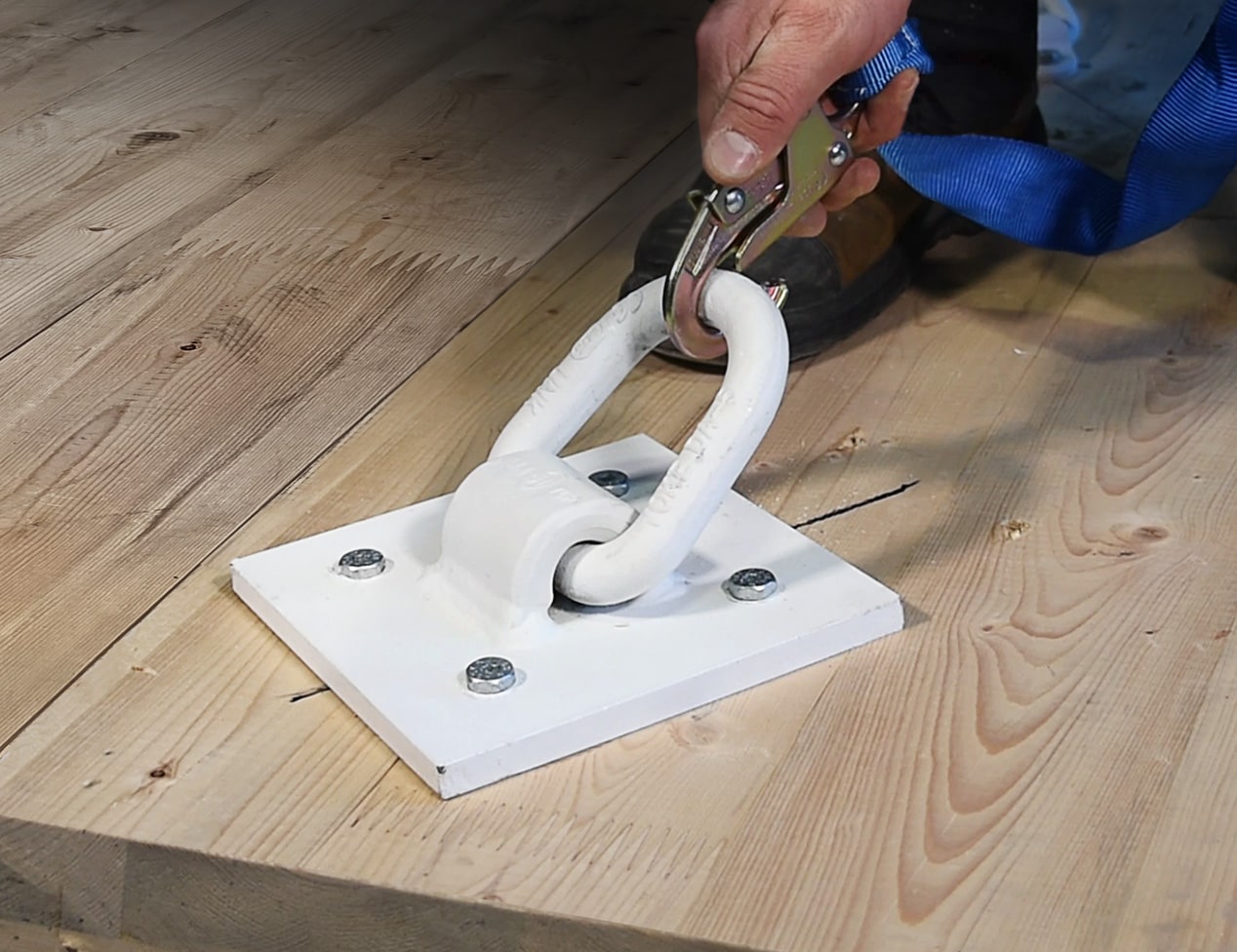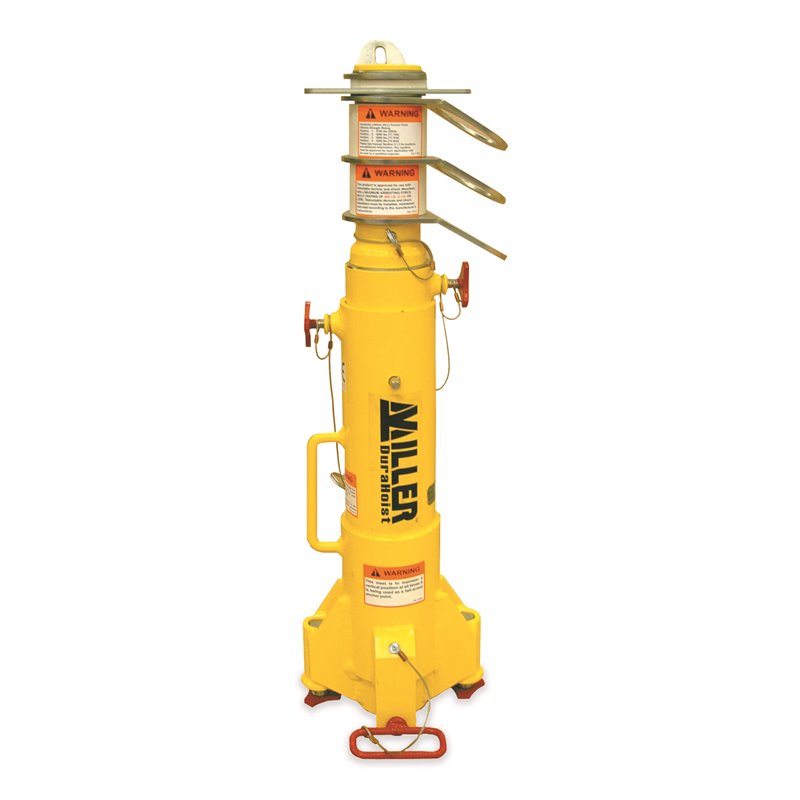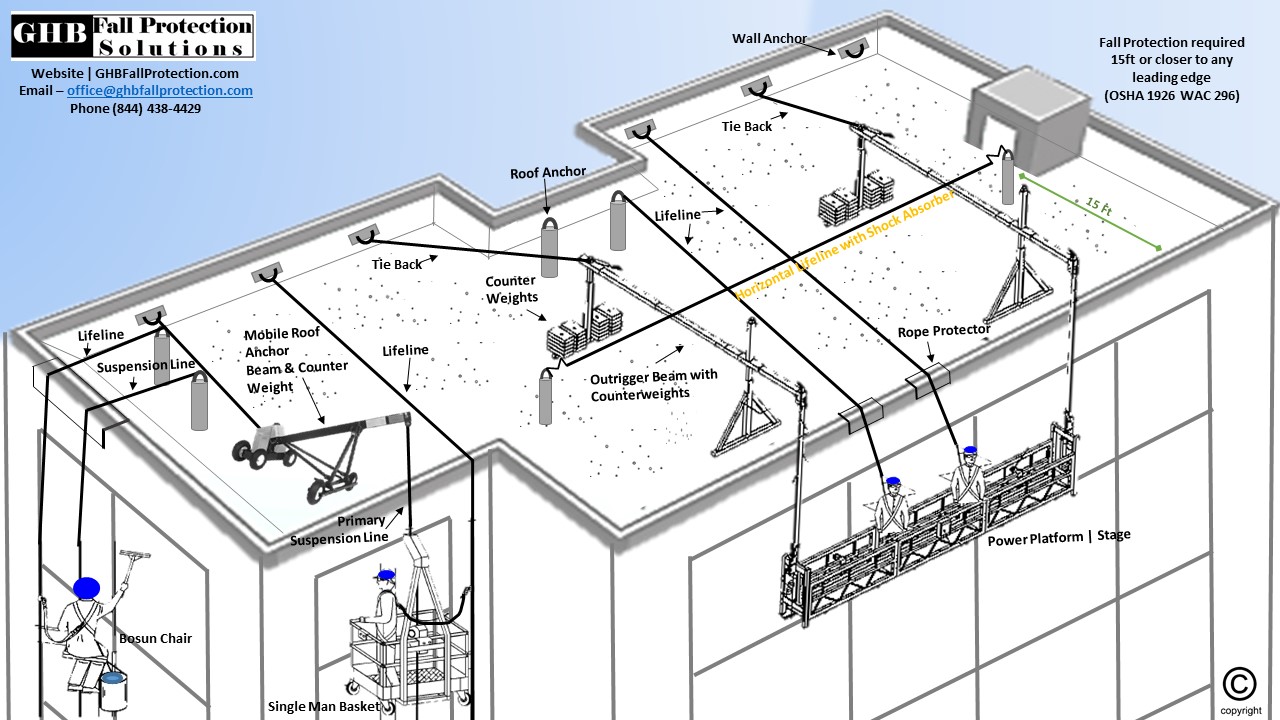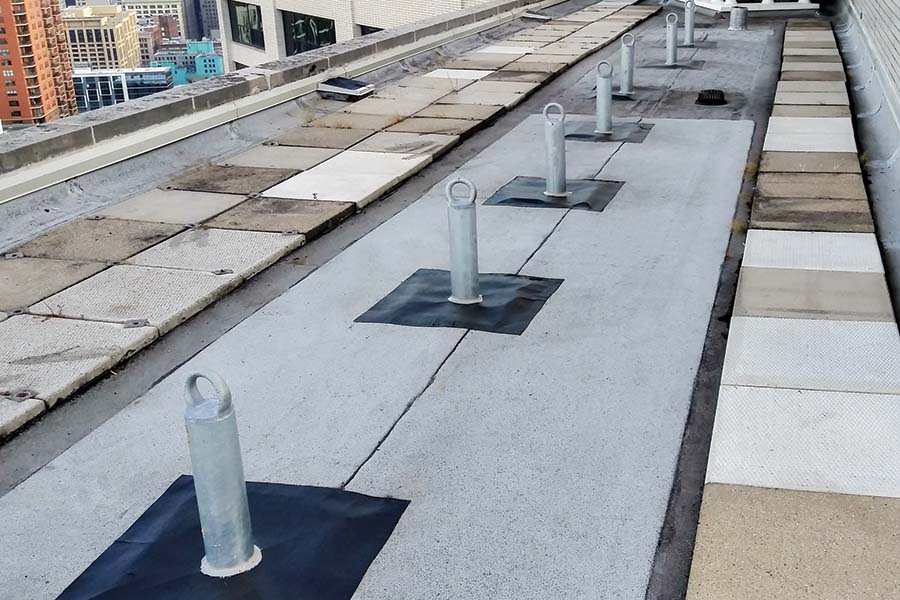Fall Arrest Anchor Point Requirements - The structure to which a personal fall arrest system is attached must sustain static loads applied in the directions permitted by the fall arrest system of at least: That safety factor depends on things like the weight of the employee, the potential falling distance, and the use of deceleration devices that reduce the arresting force. Web anchor points must either be able to support 5,000 pounds for each worker, or must meet a safety factor of two. Web this section establishes performance, care, and use criteria for all personal fall protection systems, including anchors, lanyards, deceleration devices, and body harnesses. Web fall protection anchors and anchorage connectors must be independent and capable of supporting 5,000 lbs. The following sets forth test procedures for personal fall arrest systems as defined in paragraph (d) of § 1910.140. Per worker attached, or they may be designed, installed and used under the supervision of a qualified person as part of a complete personal fall arrest system that maintains a safety factor of at least two times the maximum arresting force. It also defines the terms and definitions related to personal fall protection systems and their components. (1) lifelines, lanyards and deceleration devices should be attached to an anchorage and connected to the body harness in the same manner as they would be when used to protect employees.
That safety factor depends on things like the weight of the employee, the potential falling distance, and the use of deceleration devices that reduce the arresting force. Web fall protection anchors and anchorage connectors must be independent and capable of supporting 5,000 lbs. Web anchor points must either be able to support 5,000 pounds for each worker, or must meet a safety factor of two. Web this section establishes performance, care, and use criteria for all personal fall protection systems, including anchors, lanyards, deceleration devices, and body harnesses. It also defines the terms and definitions related to personal fall protection systems and their components. (1) lifelines, lanyards and deceleration devices should be attached to an anchorage and connected to the body harness in the same manner as they would be when used to protect employees. The following sets forth test procedures for personal fall arrest systems as defined in paragraph (d) of § 1910.140. Per worker attached, or they may be designed, installed and used under the supervision of a qualified person as part of a complete personal fall arrest system that maintains a safety factor of at least two times the maximum arresting force. The structure to which a personal fall arrest system is attached must sustain static loads applied in the directions permitted by the fall arrest system of at least:
The following sets forth test procedures for personal fall arrest systems as defined in paragraph (d) of § 1910.140. Web anchor points must either be able to support 5,000 pounds for each worker, or must meet a safety factor of two. The structure to which a personal fall arrest system is attached must sustain static loads applied in the directions permitted by the fall arrest system of at least: Web fall protection anchors and anchorage connectors must be independent and capable of supporting 5,000 lbs. It also defines the terms and definitions related to personal fall protection systems and their components. (1) lifelines, lanyards and deceleration devices should be attached to an anchorage and connected to the body harness in the same manner as they would be when used to protect employees. That safety factor depends on things like the weight of the employee, the potential falling distance, and the use of deceleration devices that reduce the arresting force. Per worker attached, or they may be designed, installed and used under the supervision of a qualified person as part of a complete personal fall arrest system that maintains a safety factor of at least two times the maximum arresting force. Web this section establishes performance, care, and use criteria for all personal fall protection systems, including anchors, lanyards, deceleration devices, and body harnesses.
Fall Arrest Anchor Mass Timber Connections (MTC) Solutions
It also defines the terms and definitions related to personal fall protection systems and their components. Web anchor points must either be able to support 5,000 pounds for each worker, or must meet a safety factor of two. The following sets forth test procedures for personal fall arrest systems as defined in paragraph (d) of § 1910.140. Web fall protection.
Fall Arrest Systems Safety Roof Anchor Points
Web this section establishes performance, care, and use criteria for all personal fall protection systems, including anchors, lanyards, deceleration devices, and body harnesses. That safety factor depends on things like the weight of the employee, the potential falling distance, and the use of deceleration devices that reduce the arresting force. Per worker attached, or they may be designed, installed and.
Miller DuraHoist Portable Fall Arrest Anchor Point TIAS Total
(1) lifelines, lanyards and deceleration devices should be attached to an anchorage and connected to the body harness in the same manner as they would be when used to protect employees. It also defines the terms and definitions related to personal fall protection systems and their components. The following sets forth test procedures for personal fall arrest systems as defined.
Fall Protection Anchor Systems Education
Web this section establishes performance, care, and use criteria for all personal fall protection systems, including anchors, lanyards, deceleration devices, and body harnesses. That safety factor depends on things like the weight of the employee, the potential falling distance, and the use of deceleration devices that reduce the arresting force. (1) lifelines, lanyards and deceleration devices should be attached to.
Fall Arrest Anchor Point Requirements and the 5,000 lb. Myth
Web fall protection anchors and anchorage connectors must be independent and capable of supporting 5,000 lbs. It also defines the terms and definitions related to personal fall protection systems and their components. The structure to which a personal fall arrest system is attached must sustain static loads applied in the directions permitted by the fall arrest system of at least:.
Height Safety Anchor Points Design and Installation Sydney NSW
That safety factor depends on things like the weight of the employee, the potential falling distance, and the use of deceleration devices that reduce the arresting force. The following sets forth test procedures for personal fall arrest systems as defined in paragraph (d) of § 1910.140. Web fall protection anchors and anchorage connectors must be independent and capable of supporting.
Scaffolding Safety Requirements A General Guideline To Remember
The structure to which a personal fall arrest system is attached must sustain static loads applied in the directions permitted by the fall arrest system of at least: Web fall protection anchors and anchorage connectors must be independent and capable of supporting 5,000 lbs. Per worker attached, or they may be designed, installed and used under the supervision of a.
Fall Arrest Anchor Points Realm Height Safety
(1) lifelines, lanyards and deceleration devices should be attached to an anchorage and connected to the body harness in the same manner as they would be when used to protect employees. Per worker attached, or they may be designed, installed and used under the supervision of a qualified person as part of a complete personal fall arrest system that maintains.
Fall Arrest Anchor Point Requirements and the 5,000 lb. Myth
Per worker attached, or they may be designed, installed and used under the supervision of a qualified person as part of a complete personal fall arrest system that maintains a safety factor of at least two times the maximum arresting force. Web fall protection anchors and anchorage connectors must be independent and capable of supporting 5,000 lbs. The structure to.
Vertical Fall Arrest System On Rigid Rail Guardall I SS ENTERPRISE
That safety factor depends on things like the weight of the employee, the potential falling distance, and the use of deceleration devices that reduce the arresting force. The structure to which a personal fall arrest system is attached must sustain static loads applied in the directions permitted by the fall arrest system of at least: (1) lifelines, lanyards and deceleration.
(1) Lifelines, Lanyards And Deceleration Devices Should Be Attached To An Anchorage And Connected To The Body Harness In The Same Manner As They Would Be When Used To Protect Employees.
Web anchor points must either be able to support 5,000 pounds for each worker, or must meet a safety factor of two. It also defines the terms and definitions related to personal fall protection systems and their components. Per worker attached, or they may be designed, installed and used under the supervision of a qualified person as part of a complete personal fall arrest system that maintains a safety factor of at least two times the maximum arresting force. The following sets forth test procedures for personal fall arrest systems as defined in paragraph (d) of § 1910.140.
The Structure To Which A Personal Fall Arrest System Is Attached Must Sustain Static Loads Applied In The Directions Permitted By The Fall Arrest System Of At Least:
Web fall protection anchors and anchorage connectors must be independent and capable of supporting 5,000 lbs. Web this section establishes performance, care, and use criteria for all personal fall protection systems, including anchors, lanyards, deceleration devices, and body harnesses. That safety factor depends on things like the weight of the employee, the potential falling distance, and the use of deceleration devices that reduce the arresting force.









